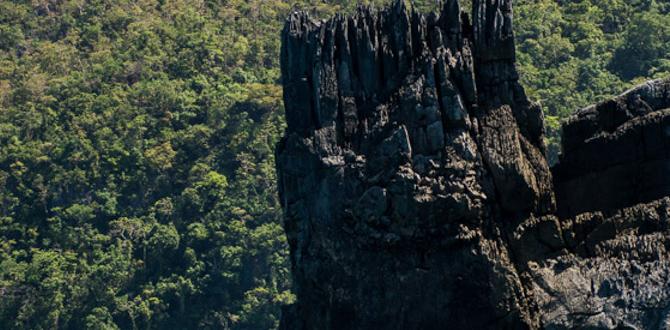Blue Mountains photo spots for sunsets are plentiful and stunning. Discover the best locations and tips for capturing breathtaking sunset views in the Blue Mountains, making your photography trip unforgettable and stress-free.
The Blue Mountains offer some of the most spectacular sunset views imaginable. As the sun dips below the horizon, it paints the vast eucalyptus forests and dramatic rock formations in a breathtaking palette of oranges, reds, and purples. Many travelers dream of capturing this magic, but finding the perfect vantage point can feel overwhelming.
Don’t worry, capturing those postcard-perfect sunset shots is easier than you think! We’ll walk you through the best spots and simple techniques to make your Blue Mountains sunset photography a resounding success, adding comfort and confidence to your journey. Let’s explore where the light truly shines.
Capturing the Magic: Why Blue Mountains Sunsets Are Unmissable
The Blue Mountains, a World Heritage-listed region just west of Sydney, are renowned for their dramatic landscapes. Think towering eucalyptus forests, sheer sandstone cliffs, cascading waterfalls, and unique rock formations. When the sun begins its descent, these features are bathed in a warm, golden light that transforms the entire landscape. It’s a photographer’s paradise, offering endless opportunities to create stunning imagery.
For travelers, especially those focused on comfort and ease, having a plan for sunset viewing is key. It means avoiding frantic searching when the light is fading and instead being settled in the perfect spot, ready to witness and record nature’s daily masterpiece. Whether you’re a seasoned photographer or just enjoying the view with your phone, understanding the prime locations means less stress and more awe. Here are the essential spots that will make your Blue Mountains sunset experience truly special.
Top Blue Mountains Photo Spots for Breathtaking Sunsets
Finding the right spot is half the battle when chasing sunsets. The Blue Mountains offer a variety of viewpoints, each with its unique charm. We’ve curated a list of the most reliable and rewarding locations for sunset photography, ensuring you get that golden hour glow you’re looking for.
1. Echo Point Lookout, Katoomba
Echo Point is arguably the most famous viewpoint in the Blue Mountains, and for good reason. It offers an iconic, unobstructed view of the Three Sisters, the Jamison Valley, and Mount Solitary. As the sun sets, the light filters through the mist, casting dramatic shadows and illuminating the rock formations in a way that’s simply unforgettable.
Why it’s great for sunsets:
- Incredible panoramic views of the Three Sisters.
- Easy accessibility, suitable for all travelers, including those prioritizing comfort and ease.
- Well-maintained viewing platforms ensure a clear line of sight.
- The Jamison Valley below catches the last rays of light beautifully.
Practical Tip: Come a little early to secure a good spot, especially on weekends or during peak season. The amphitheater-style seating can get busy, but there are various vantage points along the path leading to the main lookout.
2. Govetts Leap Lookout, Blackheath
Govetts Leap offers a breathtaking perspective looking out over the Grose Valley. Known for its sheer cliffs and spectacular waterfall, Bridal Veil Falls, this spot is equally stunning at sunset. The way the light hits the vast expanse of the valley and the distant escarpments creates a serene yet powerful scene.
Why it’s great for sunsets:
- Expansive views of the Grose Valley.
- Features the impressive Bridal Veil Falls, which can be beautifully lit by the setting sun.
- Less crowded than Echo Point, offering a more tranquil experience.
- Excellent for capturing silhouettes of trees against the colorful sky.
Practical Tip: Blackheath is higher and can be cooler than other parts of the Blue Mountains, so bring an extra layer. The winds here can also be strong, so secure your camera gear.
3. Sublime Point Lookout, Leura
Named aptly, Sublime Point offers a slightly different, more intimate view of the Jamison Valley compared to Echo Point. It provides a sense of being high above the world, looking down into a sea of eucalyptus. The angled perspective allows the setting sun to cast long, dramatic shadows across the valley floor.
Why it’s great for sunsets:
- Unique angled views of the Jamison Valley.
- Often less crowded, providing a peaceful atmosphere.
- Great for capturing the layers of the landscape as the light fades.
- A short, easy walk from the car park, making it accessible for many.
Practical Tip: Combine a visit to Sublime Point with a walk along the Prince Henry Cliff Walk before sunset for a more immersive experience.
4. Bianche Reserve Reserve, Mount Victoria
For those seeking a more secluded and local experience, Bianche Reserve offers a wonderful surprise. This lookout provides expansive views, often with fewer crowds, allowing for a more personal connection with the landscape. The open sky here is perfect for watching the entire sunset unfold.
Why it’s great for sunsets:
- Peaceful and less touristy.
- Offers a broad horizon for dramatic sky color.
- A good option if you want to escape the main attractions.
- Easy parking and a short walk to the viewing area.
Practical Tip: This spot is ideal for those who appreciate quiet contemplation and wish to enjoy the sunset without hustle and bustle. Pack a thermos of your favorite warm drink for added comfort.
5. Hargraves Lookout, Blackheath
Located off the Bells Line of Road, Hargraves Lookout provides a stunning vista of the Megalong Valley. It’s particularly famous for its dramatic, sweeping views that are enhanced by the warm evening light. The expansive nature of the valley allows for unique lighting conditions as the sun dips low.
Why it’s great for sunsets:
- Overlooks the vast Megalong Valley, offering a different perspective.
- Excellent for capturing the interplay of light and shadow on the valley slopes.
- Often a good spot for seeing migrating birds as the day ends.
- Accessible by car with parking available.
Practical Tip: This lookout is a bit further out but well worth the drive for its scenic beauty and tranquility. The drive along Bells Line of Road is also very picturesque.
Essential Photography Tips for Blue Mountains Sunsets
Capturing a stunning sunset goes beyond just pointing your camera at the sky. A few simple techniques can elevate your photos from snapshots to stunning works of art, ensuring a stress-free and rewarding photography session.
Gear Up for Success
While your smartphone can capture beautiful moments, a few photography essentials can make a big difference.
- Camera: Any camera will do, from a smartphone to a DSLR. The key is to know its capabilities.
- Tripod: Crucial for low-light conditions to ensure sharp images and prevent camera shake. A sturdy travel tripod is a great companion for any trip, offering stability without adding too much weight.
- Lenses: A wide-angle lens is great for capturing the expansive landscapes, while a telephoto lens can isolate details or compress the scene.
- Filters (Optional): A graduated neutral density (GND) filter can help balance the bright sky with the darker foreground, ensuring detail in both.
- Extra Batteries: Cold and long shooting sessions can drain batteries quickly.
- Cleaning Cloth: For wiping dust or moisture from your lens.
For travelers, especially those managing family needs or personal comfort items like adult or child diapers, keeping your gear organized and accessible is paramount. A good backpack or camera bag will make transporting your essentials much easier.
Camera Settings for Sunset Photography
Getting the right exposure and focus is key. Here’s a no-fuss guide to settings that work well.
1. Shooting Mode:
- For beginners, Aperture Priority (Av or A) or Shutter Priority (Tv or S) are excellent. Aperture Priority lets you control depth of field, while Shutter Priority lets you control motion blur.
- If comfortable, Manual (M) mode gives you complete control.
2. Aperture (f-stop):
- For landscapes, f/8 to f/11 is a good starting point. This provides a good depth of field, ensuring both foreground and background are relatively sharp.
- If you want to isolate a subject or are shooting with a wide aperture for more light, you can adjust accordingly.
3. Shutter Speed:
- This will vary greatly depending on the available light and your chosen aperture and ISO.
- When using a tripod, you can afford slower shutter speeds, which can introduce motion blur to clouds or water (if there’s a waterfall nearby), adding a dramatic effect.
- If hand-holding, aim for a faster shutter speed to avoid blur, often by increasing ISO or opening the aperture.
4. ISO:
- Keep your ISO as low as possible (e.g., 100 or 200) to minimize digital noise and ensure the cleanest image quality.
- As light fades, you may need to increase ISO. Be mindful of your camera’s limits for acceptable noise levels.
5. White Balance:
- Auto White Balance (AWB) often works well, but for sunsets, you might want to experiment.
- Setting it to “Cloudy” or “Shade” can often enhance the warm tones of the sunset, making the reds and oranges richer.
- Shooting in RAW format allows you to adjust white balance perfectly in post-processing without losing quality.
Composition Techniques
How you frame your shot is as important as when you take it.
- Rule of Thirds: Imagine your frame divided into nine equal sections by two horizontal and two vertical lines. Place key elements (like the horizon, or prominently silhouetted trees) along these lines or at their intersections.
- Leading Lines: Use natural elements like a path, a fence, or a riverbed to guide the viewer’s eye into the scene and towards the sunset.
- Silhouettes: Position a dark, recognizable subject (like a tree or a rock formation) against the bright sunset sky to create a striking silhouette. Ensure the foreground is dark enough to become a silhouette, but also has some discernible shape.
- Foreground Interest: Don’t just focus on the sky. Include something interesting in the foreground—a unique plant, a rock, or even a person (with careful positioning)—to add depth and context to your image.
- Look for Reflections: If there are any puddles or still water bodies, reflections can add a magical symmetry to your sunset shots.
Mastering the Light
The “golden hour” and “blue hour” offer unique lighting opportunities.
- Golden Hour: The period shortly after sunrise and before sunset, when the sun is low on the horizon, casting a warm, soft, golden light. This is when the magic happens.
- Blue Hour: The period after sunset (or before sunrise) when the sun has completely dipped below the horizon. The sky takes on a deep, rich blue hue, providing a beautiful contrast to any remaining warm light on the horizon. This is perfect for moody landscape shots and long exposures.
- Experiment with Exposure: Sometimes, underexposing slightly can preserve the vibrant colors in the sky. Other times, you might want to compensate for the bright sky to reveal foreground detail. Bracket your exposures (take multiple shots at different exposure settings) to give yourself options in post-processing.
Post-Processing Tips
A little editing can enhance your sunset photos.
- Adjust Exposure and Contrast: Fine-tune the overall brightness and contrast.
- Boost Saturation/Vibrance: Slightly increase these to make the sunset colors pop, but be careful not to overdo it, which can make the image look unnatural.
- Sharpening: Apply subtle sharpening to bring out details.
- Noise Reduction: If you had to use a higher ISO, apply noise reduction to clean up any graininess.
Remember, the goal is to enhance the natural beauty of what you saw, not to create something artificial. For those who may require personal care items like adult diapers for extended travel, having confidence in your comfort allows you to focus entirely on enjoying and capturing these moments.
Planning Your Blue Mountains Sunset Trip: Practical Considerations
Having a great sunset photo spot is one thing, but planning your trip smoothly ensures a comfortable and enjoyable experience from start to finish. For travelers, especially those who need to manage personal care or travel with children, a little foresight goes a long way.
Timing is Everything
Check Sunset Times: Always check the exact sunset time for your chosen date and location. Websites like Time and Date are excellent resources.
Arrive Early: Aim to arrive at your chosen spot at least 30-60 minutes before sunset. This allows time for parking, walking to the viewpoint, setting up your gear, and getting settled. It also gives you the chance to capture the changing light as the day transitions into evening.
Factor in Travel Time: The Blue Mountains are a popular destination, and traffic can be a factor, especially on weekends and holidays. Always allow ample travel time from your accommodation or Sydney. Using navigation apps like Google Maps can help you estimate travel times, but add a buffer.
Weather Preparedness
The weather in the mountains can change rapidly.
- Check the Forecast: Look at the weather forecast for the specific area you’ll be visiting on the day of your trip. Mountain weather can differ significantly from Sydney.
- Dress in Layers: Temperatures can drop quickly after sunset. Layers are essential for staying comfortable. Include a waterproof and windproof outer layer, as rain can occur unexpectedly.
- Comfortable Footwear: You’ll likely be doing some walking to reach viewpoints, so comfortable shoes are a must.
Comfort and Personal Needs
For many travelers, comfort and convenience are paramount.
- Snacks and Drinks: Pack water and snacks. Finding food options near remote lookouts can be challenging, so self-sufficiency is key. A warm drink in a thermos can be very comforting as the evening cools.
- Personal Care: For individuals who use adult diapers or child diapers, planning ahead ensures a stress-free experience. Ensure you have enough supplies for your outing, including disposal bags if needed. Knowing where restrooms are located can also be helpful. Many parking areas will have facilities.
- First-Aid Kit: A small, basic first-aid kit is always a wise addition to your travel essentials.
Accessibility and Safety
Ensuring everyone can enjoy the view is important.
- Accessible Viewpoints: Some of the main lookouts, like Echo Point and Govetts Leap, have good accessibility with paved paths and viewing platforms, making them suitable for those with mobility concerns or those traveling with young children. Always check individual location details if accessibility is a primary concern.
- Stay on Marked Paths: For safety, always stay on marked paths and behind safety barriers. The terrain can be steep and uneven.
- Light Up Your Way: Bring a reliable flashlight or headlamp for the walk back to your car after dark.
Example Itinerary for a Blue Mountains Sunset Trip
Here’s a sample itinerary for a day trip focusing on sunset photography, prioritizing comfort and efficiency.
| Time | Activity | Notes |
|---|---|---|
| 1:00 PM | Depart Sydney/Accommodation | Allow for traffic and scenic stops. |
| 2:30 PM | Arrive in Katoomba/Blackheath | Grab a coffee or light snack. |
| 3:00 PM | Visit first lookout (e.g., Echo Point) | Explore, take photos, acclimatize to the area. |
| 4:00 PM | Travel to second lookout (e.g., Govetts Leap or Sublime Point) | Enjoy the scenic drive. |
| 4:30 PM | Set up at chosen sunset spot | Secure your tripod, frame your shot, relax. |
| 5:00 PM – Sunset | Golden Hour Photography | Capture the changing light. Remember to check sunset time! |
| Post-Sunset | Blue Hour Photography & Pack Up | Enjoy the twilight hues. Safely pack gear. |
| After Dark | Head back to car/dinner | Use your flashlight. Consider dinner in a local town. |
This structured approach ensures you maximize your time and comfort, making the most of your Blue Mountains adventure. For peace of mind, ensure you have all your personal comfort and care needs managed before







